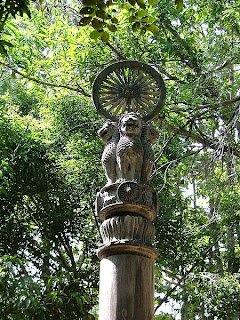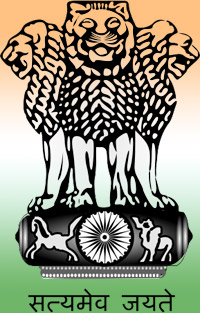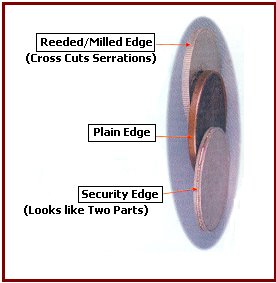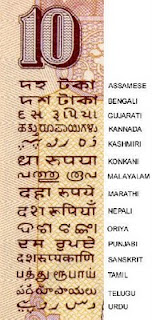Among the early issuers, the General Bank of Bengal and Bahar (1773-75) was a state sponsored institution set up in participation with local expertise. Its notes enjoyed government patronage. Though successful and profitable, the bank was officially wound up and was short lived. The Bank of Hindostan (1770-1832) was set up by the agency house of Alexander and Company was particularly successful. It survived three panic runs on it. The Bank of Hindostan finally went under when its parent firm M/s Alexander and Co. failed in the commercial crisis of 1832. Official patronage and the acceptance of notes in the payment of revenue was a very important factor in determining the circulation of bank notes. Wide use of bank notes, however, came with the note issues of the semi-government Presidency Banks, notably the Bank of Bengal which was established in 1806 as the Bank of Calcutta with a capital of 50 lakh sicca rupees. These banks were established by Government Charters and had an intimate relationship with the Government. The charter granted to these banks accorded them the privilege of issuing notes for circulation within their circles.
Notes issued by the Bank of Bengal can broadly be categorised in 3 broad series viz: the 'Unifaced' Series, the 'Commerce' Series and the 'Britannia' Series. The early notes of the Bank of Bengal were unifaced and were issued as one gold mohur (sixteen sicca rupees in Calcutta) and in denominations deemed convenient in the early 19th Century, viz., Rs. 100, Rs. 250, Rs. 500, etc.
Unifaced Notes of the Bank of Bengal
The Bank of Bengal notes later introduced a vignette represented an allegorical female figure personifying 'Commerce' sitting by the quay. The notes were printed on both sides. On the obverse the name of the bank and the denominations were printed in three scripts, viz., Urdu, Bengali and Nagri. On the reverse of such notes was printed a cartouche with ornamentation carrying the name of the Bank. Around the mid nineteenth century, the motif 'Commerce' was replaced by 'Britannia'. The note had intricate patterns and multiple colours to deter forgeries.
The second Presidency Bank was established in 1840 in Bombay, which had developed as major commercial centre. The Bank had a checkered history. The crisis resulting from the end of the speculative cotton boom led to the liquidation of Bank of Bombay in 1868. It was however reconstituted in the same year. Notes issued by the Bank of Bombay carried the vignettes of the Town Hall and others the statues of Mountstuart Elphinstone and John Malcolm.


Note issued by the Bank of Bombay
The Bank of Madras established in 1843 was the third Presidency Bank. It had the smallest issue of bank notes amongst Presidency Banks. The notes of the Bank of Madras bore the vignette of Sir Thomas Munroe, Governor of Madras (1817-1827).
The other private banks which issued bank notes were the Orient Bank Corporation established in Bombay as the Bank of Western India in 1842. Its notes featured the Bombay Town Hall as vignette. The Commercial Bank of India established in 1845 in Bombay (also an Exchange Bank) issued exotic notes with an interblend of Western and Eastern Motifs. The bank failed in the crash of 1866. The paper currency Act of 1861 divested these banks of the right to note issue; the Presidency Banks were, however, given the free use of Government balances and were initially given the right to manage the note issues of Government of India.
British India Issues
British India Issues commence with the Paper Currency Act of 1861 which gave the Government the monopoly of note issue in India. The management of paper currency across the geographical expanse of the Indian sub-continent was a task of considerable proportions. Initially the Presidency Banks were appointed as agents to promote the circulation of these notes in view of their existing infrastructure. The Act of 1861 authorised the Presidency Banks to enter into agreements with the Secretary of State for becoming agents for the issue, payment and exchange of promissory notes of the Government of India. The problem of redemption of these notes over vast expanses of the Indian sub-continent led to the concept of 'Currency Circles', where these notes were legal tender.
These Currency Circles increased in number as the Government progressively took over the work. The agency agreements with the Presidency Banks were finally terminated in 1867. The Management of Paper Currency was subsequently, in turn, entrusted to the Mint Masters, the Accountant Generals and the Controller of Currency.
The first set of British India notes were the 'Victoria Portrait' Series issued in denominations of 10, 20, 50, 100, 1000. These were unifaced, carried two language panels and were printed on hand-moulded paper manufactured at the Laverstock Paper Mills (Portals). The security features incorporated the watermark (GOVERNMENT OF INDIA, RUPEES, two signatures and wavy lines), the printed signature and the registration of the notes.

Rupees Ten

Rupees Twenty

Rupees HundredBritish India Notes facilitated inter-spatial transfer of funds. As a security precaution, notes were cut in half. One set was sent by post. On confirmation of receipt, the other half was despatched by post.

Half note
The Victoria Portrait series was withdrawn in the wake of a spate of forgeries and replaced by the unifaced 'Underprint Series' which were introduced in 1867. In deference to public demand, notes in the denomination of Rupees Five were introduced. Initially, notes were legally encashable only in the Currency Circle in which they were issued; however, between 1903 an 1911, notes of denomination 5, 10, 50 and 100 500, 1000 and 10000 were 'universalised', i.e. were legally encashable outside the Currency Circle of Issue.
The Underprint Series notes were printed on moulded paper and carried 4 language panels (Green Series). The languages differed as per the currency circle of Issue. Language panels were increased to 8 in the Red Series. The improved security features included a wavy line watermark, the manufacturer's code in the watermark (the source of much confusion in dating), guilloche patterns and a coloured underprint.
This series remained largely unchanged till the introduction of the 'King's Portrait' series which commenced in 1923.

Green Underprint - Rupees Five Hundred

Green Underprint - Rupees Five

Red Underprint - Rupees Fifty
The introduction of small denomination notes in India was essentially in the realm of the exigent. Compulsions of the first World War led to the introduction of paper currency of small denominations. Rupee One was introduced on 30th November, 1917 followed by the exotic Rupees Two and Annas Eight. The issuance of these notes was discontinued on 1st January, 1926 on cost benefit considerations. These notes first carried the portrait of King George V and were the precursors of the 'King's Portrait' Series which were to follow.

Rupee One - Obverse

Rupee One -Reverse

Rupees Two and Annas Eight - Obverse
Regular issues of this Series carrying the portrait of George V were introduced in May, 1923 on a Ten Rupee Note. The King's Portrait Motif continued as an integral feature of all Paper Money issues of British India. Government of India continued to issue currency notes till 1935 when the Reserve Bank of India took over the functions of the Controller of Currency. These notes were issued in denominations of Rs
1, 2½ , 5, 10, 50, 100, 1000, 10,000.

Rupees Fifty

Rupees One Thousand

Rupees Ten Thousand
With the establishment of the Currency Note Press at Nasik in 1928, currency notes came to be progressively printed in India. By 1932 the Nasik Press was printing the entire spectrum of India currency notes. The improved security features were changed watermarks, intricate portrait designs and multicoloured printing.
British India: Reserve Bank Issues
The Reserve Bank of India was formally inaugurated on Monday, April 1, 1935 with its Central Office at Calcutta and it was set up on the recommendations of the Hilton-Young Commission. The commission submitted its report in the year 1926, though the bank was not set up for another nine years.

The first Central Office of the Reserve Bank of India
It began operations by taking over from the Government the functions hitherto performed by the Controller of Currency and from the Imperial Bank the management of Government Accounts and Public Debt. The existing Currency Offices in Calcutta, Bombay, Madras, Rangoon, Karachi, Lahore and Cawnpore became the branches of the Issue Department of the Bank. (It was not then considered necessary to have an office in Delhi.).
Section 22 of the RBI Act, 1934, empowered it to continue issuing Government of India notes till its own notes were ready for issue. The Central Board of the Bank recommended that the Bank notes retain the general size, appearance and design of the existing notes, albeit with modifications.
Notes with the portrait of Edward VIII were scheduled for release in the summer of '37. But Edward's heart had its reasons and his abdication, at levels mundane, delayed the Bank's issues to January 1938 when the first Five Rupee note was issued bearing the portrait of George VI.

Rupees Five - First Note issued by Reserve Bank of India
This was followed by Rs 10 in February, Rs 100 in March and Rs 1,000 and Rs 10,000 in June 1938.

Rupees One Hundred

Rupees One Thousand

Rupees Ten Thousand
The first Governor, Sir Osborne Smith did not sign any bank notes; the first Reserve Bank issues were signed by the second Governor, Sir James Taylor.
 |  |
| Sir Osborne Smith | Sir James Taylor |
In August 1940, the one-rupee note was reintroduced, once again as a war time measure, as a Government note with the status of a rupee coin, in terms of the Currency Ordinance of 1940 (IV of 1940). The issuance of Rs 2 and Annas 8 was contemplated but Rs 2 was introduced instead on 3rd March , 1943.

Rupee One Obverse

Rupee One Reverse

Rupees Two
During the war, Japanese Operations to destabilise Indian currency involved high quality forgeries, largely of Re 10 notes signed by Governor C.D. Deshmukh.

Sir C. D. Deshmukh
This necessitated a change in the watermark and obverse design from the profile portrait of George VI to his full frontal portrait. As an added security feature, the security thread was introduced for the first time in India.

George VI Profile

George VI Frontal
The George VI series continued till 1947 and thereafter as a frozen series till 1950 when post independence notes were issued.
Republic India Issues
Throughout history, the right to Coinage and Currency and issues of sovereignty have been curiously conjoined, emotionally if not rationally; these issues stimulate debate even today.
The transition of currency management from colonial to independent India was a reasonably smooth affair. Midnight, August 15, 1947 heralded Indian independence from colonial rule. The Republic, however, was established on 26th January, 1950. During the interregnum, the Reserve Bank continued to issue the extant notes.
Government of India brought out the new design Re 1 note in 1949.

Government of India - Rupee One
Symbols for independent India had to be chosen. At the outset it was felt that the King's portrait be replaced by a portrait of Mahatma Gandhi. Designs were prepared to that effect. In the final analysis, the consensus moved to the choice of the Lion Capital at Sarnath in lieu of the Gandhi Portrait. The new design of notes were largely along earlier lines.

Rupees Ten - King's Portrait

Rupees Ten - Ashoka Pillar
In 1953, Hindi was displayed prominently on the new notes. The debate regarding the Hindi plural of Rupaya was settled in favour of Rupiye. High denomination notes (Rs 1,000, Rs. 5,000, Rs. 10,000) were reintroduced in 1954.

Rupees One Thousand - Tanjore Temple

Rupees Five Thousand - Gateway of India

Rupees Ten Thousand - Lion Capital, Ashoka Pillar
The lean period of the early sixties led to considerations of economy and the sizes of notes were reduced in 1967. In 1969 a commemorative design series in honour of the birth centenary celebrations of Mahatma Gandhi was issued depicting a seated Gandhi with the Sevagram Ashram as the backdrop.

Rupees One Hundred - Commemorative Design
Cost benefit considerations prompted the Bank to introduce Rs. 20 denomination notes in 1972 and Rs. 50 in 1975.

Rupees Twenty

Rupees Fifty
High denomination notes were once again demonetised in 1978 for the same reasons as the 1946 demonetisation. The 1980s saw a completely new set of notes issued. The motifs on these notes marked a departure form the earlier motifs. The emphasis lay on symbols of Science & Technology (Aryabhatta on the Rs 2 note), Progress (the Oil Rig on Re 1 and Farm Mechanisation on Rs 5) and a change in orientation to Indian Art forms on the Rs 20 and the Rs 10 notes. (Konark Wheel, Peacock).
Management of Currency had to cope with the rising demands of a growing economy, together with a fall in purchasing power. The Rupee 500 note was introduced in October 1987 with the portrait of Mahatma Gandhi. The water mark continued to be the Lion Capital, Ashoka Pillar.

Rupees Five Hundred
With the advancement of reprographic techniques, traditional security features were deemed inadequate. It was necessary to introduce new features and a new 'Mahatma Gandhi Series' was introduced in 1996. A changed watermark, windowed security thread, latent image and intaglio features for the visually handicapped are amongst the new features.

Rupees Ten : Size 137 x 63 mm

Rupees Fifty : Size 147 x 73 mm

Rupees One Hundred : Size 157 x 73 mm

Rupees Five Hundred : Size 167 x 73 mm

Rupees One Thousand : Size 177 x 73 mm
Others
By the end of the Nineteenth Century, India could broadly be divided into British India, the Princely States, the Portuguese Territories (Goa, Daman & Diu), and the French Territory of Pondicherry.
While many Princely States were issuing their own coinage, only two viz., Jammu & Kashmir and Hyderabad actually issued Paper Currency. Both the Portuguese and French Territories issued Paper Money. Burma, where the Reserve Bank had an office at Rangoon, was politically separated from India on April 1, 1937. The Indo-Burma Monetary Arrangements provided for the RBI to continue to manage the currency of Burma.
During the Second World War many petty Princely States issued emergency tokens which are alluded to as 'Cash Coupons' in lieu of coins. Emergency Money was also issued in Burma after the end of the Japanese occupation to facilitate exchange.
Traditionally Indian money had enjoyed wide circulation in the Persian Gulf Region. India had also issued notes for circulation in the Persian Gulf region as well as special notes for Haj Pilgrims







